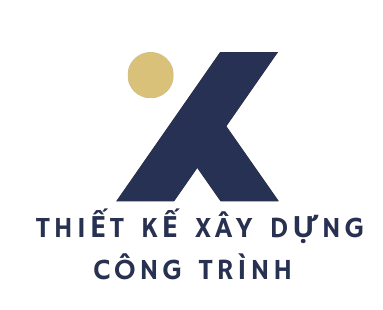Ten Dance competitions represent one of the most demanding disciplines in competitive ballroom dancing, requiring mastery of all ten International Standard and Latin dances. The exhaustive competition structure combines the elegance of ballroom alongside the dynamic energy of Latin, testing competitors’ physical endurance, technical adaptability, and artistic consistency[1][2][4].
## Origins and Structural Foundations https://ten-dance.com/
### Defining Ten Dance
Per global DanceSport regulations, International 10-Dance includes Waltz, Tango, Viennese Waltz, Foxtrot, Quickstep and Cha-cha, Samba, Rumba, Paso Doble, Jive, performed as a single competitive event[1][3][4]. In contrast to style-specific divisions, Ten Dance athletes are required to exhibit balanced mastery in contrasting techniques, a feat achieved by only 3.3% of elite dancers[1][6].
The category’s inception trace back to the standardization efforts by bodies including international DanceSport authorities, which hosted inaugural global competitions in the late 20th century. Initial dominance by UK pairs, with David Sycamore & Denise Weavers securing unprecedented winning streaks[3].
### Competition Logistics and Challenges
10-dance tournaments operate under distinct temporal demands:
– Back-to-back discipline switching: Dancers alternate between structured ballroom techniques and Latin’s rhythmic intensity during single-day sessions[1][2].
– Attire and mindset shifts: Quick changes from ballroom gowns/tails flamboyant Latin costumes intensify performance pressures[1][6].
– Evaluation metrics: Technical precision, rhythmic responsiveness, and interdisciplinary consistency influence results[4][6].
Analysis of major tournaments reveals Teutonic competitive superiority, as demonstrated by prolonged success periods[3]. Canada’s Alain Doucet & Anik Jolicoeur later emerged as four-time champions (1999-2002)[3].
## Technical and Training Complexities
### Dual-Style Mastery
Mastering Ten Dance requires:
– Divergent technical foundations: Ballroom’s vertical alignment vs. Latin’s Cuban motion[4][6].
– Contradictory musical interpretations: Standard’s flowing rhythms against Latin’s staccato accents[2][6].
– Psychological adaptation: Switching from Standard’s gliding movements Latin’s theatrical intensity mid-competition[1][6].
Training regimens demand:
– Extended rehearsal time: Minimum 20-hour weekly commitments to maintain both style proficiencies[1][6].
– Multi-disciplinary instructors: Dedicated style experts often collaborate through integrated curricula[6].
– Cross-training techniques: Ballet for posture alongside athletic endurance work[1].
### Statistical Realities
Data from dancesportinfo.net illustrate:
– Attrition rates: Nearly three-quarters of entrants leave 10-dance by their fifth competitive season[1].
– Scoring controversies: Over a third of judges admit difficulty evaluating cross-style performances[6].
## Societal Influence and Evolution
### The Category’s Unique Position
Despite the inherent difficulties, Ten Dance cultivates:
– Versatile performers: Competitors such as Canada’s Alain Doucet embody artistic completeness[3][6].
– Interdisciplinary creativity: Hybrid movements created during 10-dance choreography frequently impact specialized categories[4][6].
### Emerging Trends
10-dance confronts:
– Participation declines: From 120 global elites in 2010 to 78 in 2024[1][3].
– Rule modernization proposals: Discussions about adding American Smooth/Rhythm dances to refresh the format[4][6].
– Digital advancements: Algorithmic scoring tools under experimentation for mitigating perceived subjectivity[6].
## Synthesis
The 10-dance category remains simultaneously a proving ground and contradiction in competitive ballroom. While celebrating exceptional adaptability, the format jeopardizes athlete burnout through excessive demands. As governing bodies contemplate structural changes, the discipline’s core identity—testing human limits through artistic synthesis—continues to shape its future[1][3][6].

Có thể bạn quan tâm:
0657: Explore Inovação em Experiências Interativas Brasileiras
No vasto panorama das opções digitais disponíveis no Brasil, onde o [...]
Tranh Sơn Dầu Trừu Tượng Chiêu Tài Hút Lộc – Bí Quyết Trang Trí Mang Đến May Mắn & Thịnh Vượng
Trong những năm gần đây, tranh sơn dầu trừu tượng đang trở thành [...]
Explore Premium Lighting Solutions at LampsUSA: Brighten Your Home with Modern Flair
lamps usa In the ever-evolving world of home decor, illumination plays [...]
Áo Dài Thiết Kế Vải Lụa Gấm Đám Cưới, Sang Trọng
✨ Áo Dài Bảo Long – Nét Đẹp Truyền Thống & [...]
Coupon for Unveiling Tranquility in Every Stroke: A Transformative Adventure into Contemporary Art by Christine
Film Faster 48 Amid today’s fast-paced world, where life races forward, [...]
7ggg e Suas Plataformas: Explorando 7ggg.bet através do 7ggg login
Introdução[related_posts_by_tax title=""] No cenário de entretenimento digital brasileiro, a 7ggg destaca-se [...]